QuestionToday i had notice on my bearded dragons front hand that he had dark brown cracked scales. It looks like it goes through the tissue. i am wondering if that is anything to be concerned about and what i should do. is this scale rot?
AnswerSamantha,
It is great that you are noticing changes in your beardie and paying attention to them because oftentimes reptiles do not show when they are ill or have a problem going until it gets bad. This being said, when you see physical abnormalities on an reptile, it is time to address your husbandry. Husbandry is the living conditions you provide for your beardie. A lot of times when skin becomes irritated, it may be as simple as removing woodchips or bark that you may have at the bottom of your cage and replacing it with something easier to clean like a towel or astroturf. If you are using woodchips or other particles for substrate, these tend to trap moisture, bacteria, etc. and become a breeding ground for skin infections. This being said, I want you to also consider the following possibilities:
Referencing anapsid.org, there are 2 reasons that I believe may be causing your beardie's skin to blacken or become dark and discolored...
(1) Vesicular Dermatitis-Vesicular dermatitis, sometimes called blister disease, scale rot, or necrotizing dermatitis, is commonly caused by housing reptiles in moist, dirty environments. As the animal is forced to lie on damp substrate saturated with rotting food or feces and urates, the skin becomes infected. Watery blisters are the first sign. The infection may pass into the body causing septicemia (infection of the blood) and passing to internal organs. In small reptiles, or reptiles already severely weakened from illness, environmental or psychological stresses, infection may be rapid, and rapidly fatal. The skin may rot away from the initial blister, leaving the body more susceptible to bacterial and fungal invasion and thermal burns.
(2) Blackening Skin Syndrome- "An all-over black and crusty skin may be found on lizards who have been housed in filthy or otherwise inappropriate conditions (too cold, overcrowded, filthy). Once such a lizard is housed and fed properly, and soaked daily in warm povidone-iodine/water baths, the first shed can be startling, with the black scabby skin splitting apart to reveal the new, brilliant green skin below."
When you are dealing with something like this, it is useful to let a veterinarian diagnose the animal and treat the condition because they may require antibiotics or a prescription cream, but this is generally not a life threatening condition. Consider applying antifungal ointment containing the ingredient tolnaftate until you can get to the vet and also thoroughly cleaning your beardie's tank using a diluted bleach water solution.
If you are using wood chips or any other type of particles for a substrate, these can become very unsanitary, so remove the particles and lay a towel down in there so you can pull it out and wash it frequently.
I hope this helps!
Sincerely,
Sara J Gwerder
President
Raptor Rescue Iguana Sanctuary
Shreveport, LA
www.RaptorRescue.org

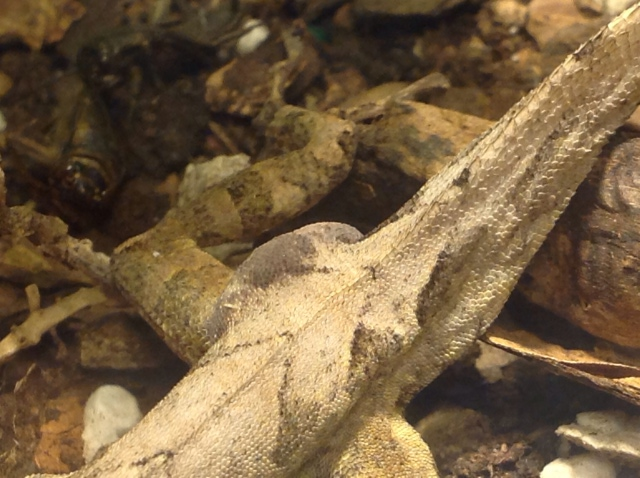 Brown Anole Leg Cyst
Question
His cyst?
Hi, Ive been wondering what s
Brown Anole Leg Cyst
Question
His cyst?
Hi, Ive been wondering what s
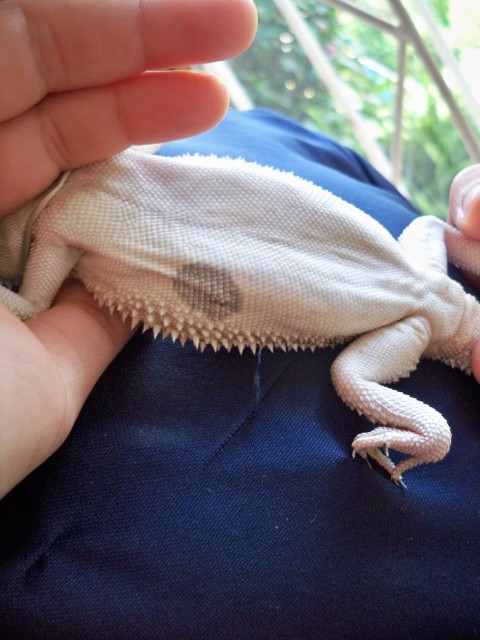 black patches on bearded dragon
QuestionQUESTION: I am worried because I have noticed t
black patches on bearded dragon
QuestionQUESTION: I am worried because I have noticed t
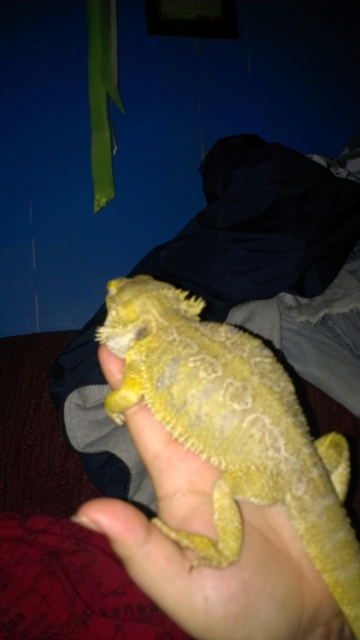 best way to get my beardie to interact and used to being in the floor
Question
asleep in my hand
My name is Dana my be
best way to get my beardie to interact and used to being in the floor
Question
asleep in my hand
My name is Dana my be
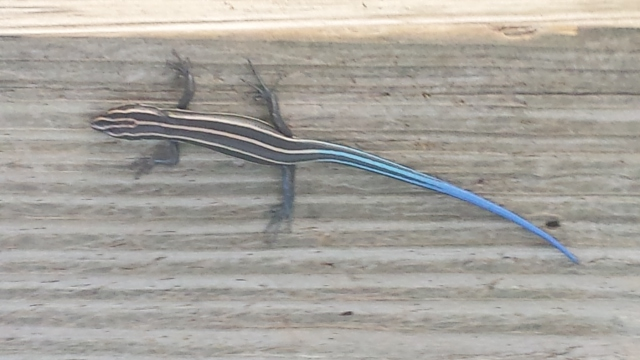 identify lizard please
Question
Waynesboro, tn
could you please tell me
identify lizard please
Question
Waynesboro, tn
could you please tell me
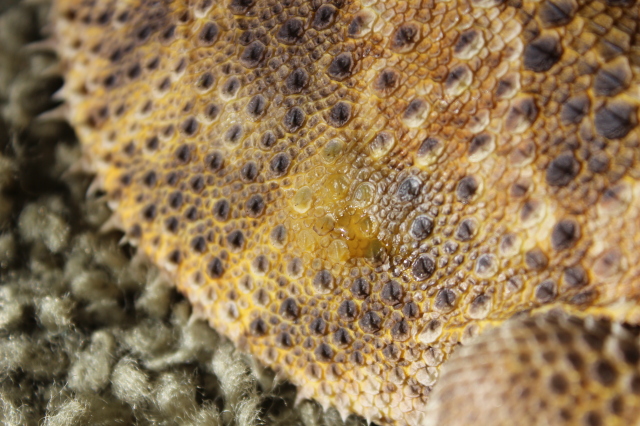 Bearded Dragon Pustule/Sore on Back
QuestionDJ Sore
QUESTION: So, the smaller of our
Bearded Dragon Pustule/Sore on Back
QuestionDJ Sore
QUESTION: So, the smaller of our